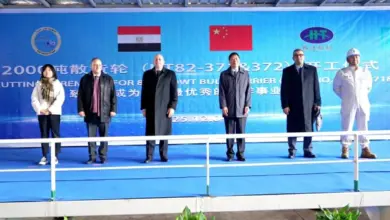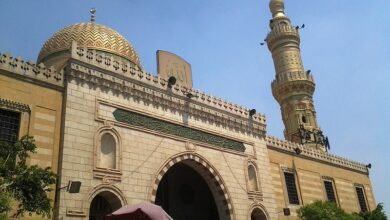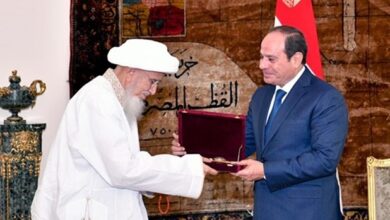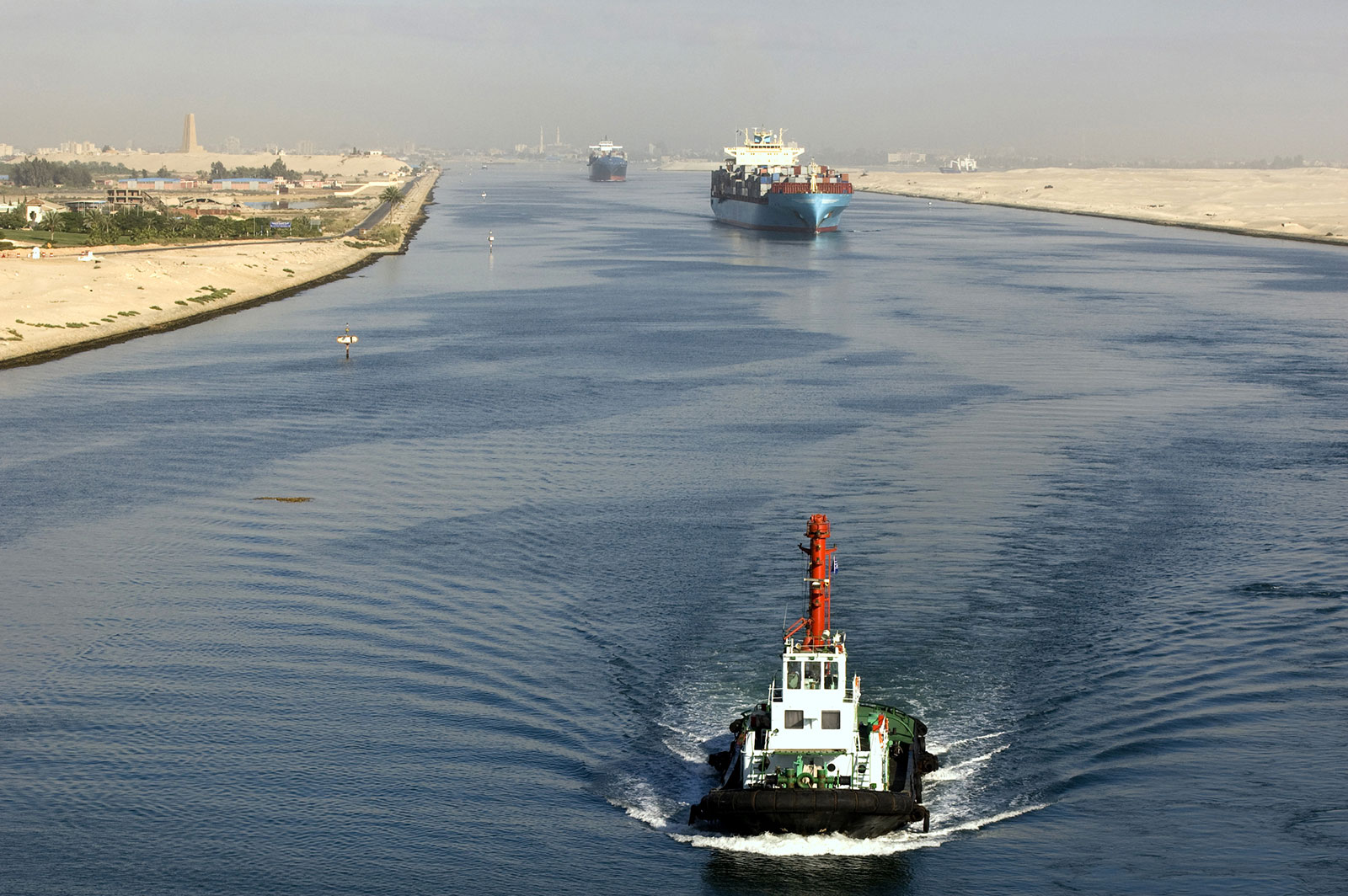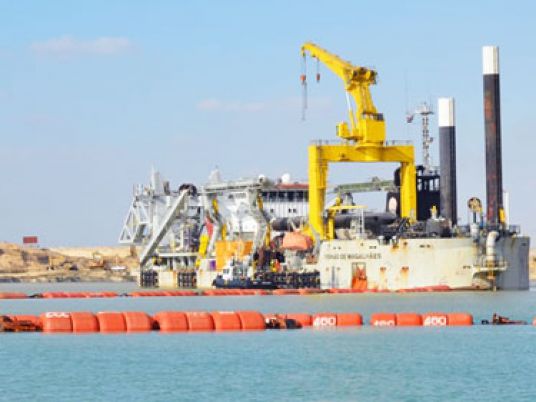
Bulldozers push earth and dredgers spit mud round the clock at Egypt's Suez Canal in a race to quickly expand the strategic waterway for two-way traffic, a project trumpeted by President Abdel Fattah al-Sisi to revive both the country's damaged economy and visions of nationalist glory.
While the government's goal of more than doubling annual canal revenues to some US$13 billion in less than a decade appears overly ambitious, shippers and analysts say the reduction of waiting time to almost nothing will draw some vessels. Any major increase, however, depends on something unlikely to happen soon — a large jump in European demand fueling greater shipping from Asia.
"It all depends on the trade volume between East and West, not the capacity of the canal," said Xu Zhibin, managing director for the Egyptian affiliate of China's state-owned COSCO, one of the world's top container shippers. "Volume will rise if the European economy begins to boom … As of now, I don't think that there will be an increase in volume."
The expansion's importance is more long term, as it will better position the canal to keep its prominence in the future. In the short term, it appears to be more of a prestige exercise to boost national pride after four years of demoralizing turmoil and to shore up the image of President Sisi as the savior of the nation. Egypt's economy has been battered since the 2011 uprising that ousted longtime autocrat Hosni Mubarak. His successor, Mohamed Morsy, an elected but divisive Islamist, was overthrown by then-army chief Sisi during mass protests in 2013.
Al-Sisi, who was elected president last spring, has risen on promises to stabilize the country and rebuild the economy. In a dramatic move after his election, he ordered that the Suez Canal expansion, envisaged as a three-year project, instead be completed in one year.
The military is directing the work, which involves digging a new waterway running for 35 kilometers parallel to the canal to end in the Red Sea, while deepening and expanding existing bypasses. Authorities say it is on track to open in August.
At the Suez Canal Authority's headquarters in Ismailia, films shown to journalists and potential investors lavish praise on Sisi with an almost Soviet-era extravagance. Men in the footage thank God for his arrival and elderly women call him "pure" and "good." In televised speeches in which Sisi has touted the canal, martial music plays over footage of special forces, tanks and fighter jets interspersed with shots of a vigilant Sisi directing officials and inspecting operations.
Bonds offered to fund the $8.5 billion military-led expansion were snapped up — mostly by individuals — in just over a week last autumn in a sale driven by nationalist fervor — and a 12 percent interest rate.
The canal has long been tied to Egyptian national pride. Inaugurated in 1869, it connects the Mediterranean Sea to the Red Sea, giving maritime traffic between Europe and Asia a short cut to avoid the long trip around Africa. In 1956, then-President Gamal Abdel-Nasser nationalized the canal from the British and French companies that owned it, a moment cherished by Egyptians as a defiant break from imperialist control. Egypt fought three wars with Israel around the canal, in 1956, 1967 and 1973 — when Egypt launched a surprise attack across the canal that is now remembered as the country's greatest battlefield victory.
The canal is also one of Egypt's biggest foreign currency earners, drawing in a record $5.5 billion in 2014. With the expansion, the canal authority projects it can double the number of ships transiting daily to 97 by 2023, boosting toll incomes to $13.2 billion that year.
But hitting that target requires not just a jump in global economic growth. It depends on fuel prices and the canal's fee structure, all factors that shippers weigh to determine whether it's worth taking the canal or the long route around Africa.
"If petroleum and thus fuel prices increase, the canal becomes more attractive, but now they are decreasing, which means the opposite is true," said Xu, of COSCO, which on average sends a vessel a day through the canal. "If the tolls, which are based on the old oil prices of over $100 a barrel, increase, some shippers will want to travel via the Cape of Good Hope."
The European Union, the destination for most ships passing through the canal, forecasts its economy will grow by a mere 1.7 percent this year, and 2.1 percent in 2016 — hardly enough to boost canal traffic significantly, shippers say. Industry estimates of container shipments through the canal project only three to five percent annual growth for the years ahead. In 2014, container tonnage transiting the canal grew 5.5 percent compared to the previous year, authority statistics show.
Still, with global shipping trends moving toward the use of ever larger, slow-sailing container ships, the canal stands to maintain an advantage for years to come with the container trade, already the largest single type of vessel to use it in both number and cargo tonnage.
An expansion of the Panama Canal due to be finished next year could draw some traffic between Asia and the US East Coast. But "the biggest, massive container ships will never be able to pass there as it can't accommodate them, so that's a natural advantage for Suez," said Greg Knowler, a Hong Kong-based shipping expert from US analysts JOC.
Although they don't plan to ramp up operations immediately, shippers welcome the plans in general. Denmark-based Maersk, the largest single customer of the canal, says it wholeheartedly supports the project, calling it a historic effort to enable more global trade and boost prosperity overall.
Keith Svendsen, vice president of operations, said the reduced waiting time would allow the company to save some fuel, but that over the long term transparent, properly adjusted pricing policies will keep traffic from taking the route around Africa.
"We're currently looking at whether there's a case for sailing some ships south, but our preference is to continue to go through Suez — it's a shorter route, better for emissions, and we have good cooperation with the canal authorities."

